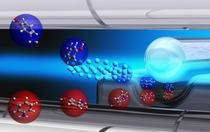New laser technique promises better process control in the pharmaceutical industry
Scientists at the Science and Technology Facilities Council (STFC) Rutherford Appleton Laboratory in Oxfordshire, UK have developed an effective laser based method for the characterisation of the bulk chemical content of pharmaceutical capsules - without opening the capsules.
In close collaboration with teams from Pfizer Ltd the researchers in STFC's Lasers for Science Facility succeeded in quantifying the presence of the active pharmaceutical ingredient in production line relevant capsules to a relative error of 1%. Other established non-invasive methods were unable to reach the same level of accuracy with the same sample.
The technique holds great potential for a range of process control applications in the pharmaceutical industry. The results of the collaborative study are reported in the Journal of Pharmaceutical and Biomedical Analysis.
The development stems from research into a novel Raman spectroscopy method, Spatially Offset Raman Spectroscopy, which is under development at STFC for a wide range of applications including the detection of explosives in non-metallic containers, the detection of counterfeit drugs through opaque packaging and the non-invasive diagnosis of bone disease and cancer. The concepts, which are relatively simple to implement, were developed through experiments involving STFC's large scale facilities which provided crucial insight into photon transport processes.
The development is being carried out in close collaboration with STFC's knowledge technology transfer arm [CLIK] and the new techniques are planned for commercialisation through STFC's spin-out company LiteThru Ltd.
Other news from the department science
These products might interest you
Most read news
More news from our other portals
See the theme worlds for related content
Topic World Spectroscopy
Investigation with spectroscopy gives us unique insights into the composition and structure of materials. From UV-Vis spectroscopy to infrared and Raman spectroscopy to fluorescence and atomic absorption spectroscopy, spectroscopy offers us a wide range of analytical techniques to precisely characterize substances. Immerse yourself in the fascinating world of spectroscopy!

Topic World Spectroscopy
Investigation with spectroscopy gives us unique insights into the composition and structure of materials. From UV-Vis spectroscopy to infrared and Raman spectroscopy to fluorescence and atomic absorption spectroscopy, spectroscopy offers us a wide range of analytical techniques to precisely characterize substances. Immerse yourself in the fascinating world of spectroscopy!






















































